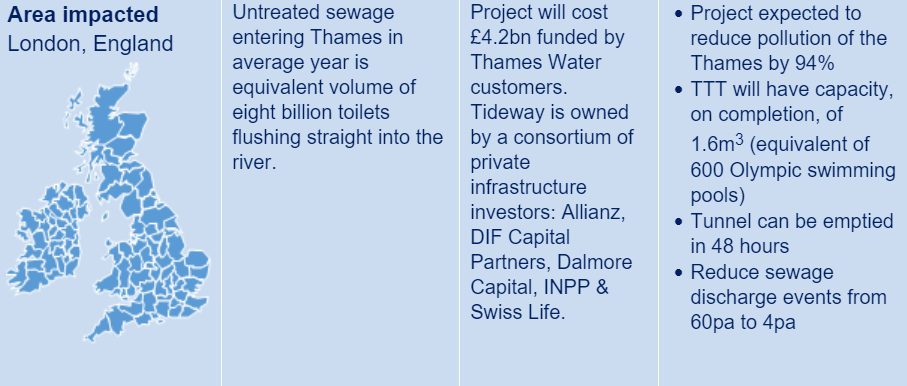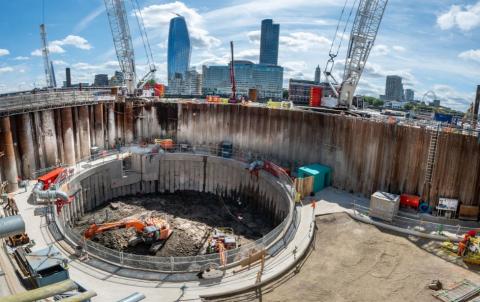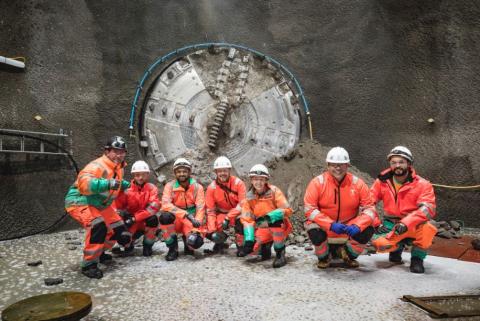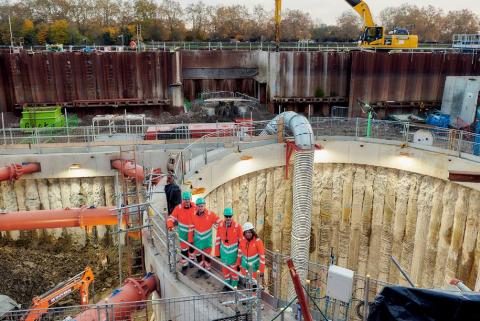Breadcrumb
Clean up the Thames for good
London's Victorian sewers, designed for four million people and built in the 1850s, no longer have the capacity to meet the demands of London, home to nine million in 2019. In addition, there is growing water consumption per capita and diminished green space to soak up rainfall meaning more untreated sewage than ever flows directly into the river Thames. To address this problem The Thames Tideway Tunnel is intercepting sewage overflows and improving London’s environment, appearance and public health, a major new sewer, 7.2m in diameter and 25 km Long are being built 30-65m under the river Thames: the Thames Tideway Tunnel. The so-far half-built ‘super-sewer’ is being carried out by world-class contractors, using sustainable, innovative and cost-effective methods of construction.
The investment in numbers
- 16 million London's population is estimated to increase to 10 million by 2160
- 100 years The Thames Tideway Tunnel will protect the river for at least the next 100 years.
- 94 % The Thames Tunnel Tideway will reduce River Thames pollution by 94%
Situation
London’s Victorian sewers no longer have the capacity to meet the demands of London today. Designed and engineered by Sir Joseph Bazalgette in the 1850s and built between 1859 and 1865 for 4 million people, the conditions under which London’s sewage system operate have changed vastly: rising water consumption per capita, diminished green space to soak up rainfall and a growing population that today numbers nearly nine million inhabitants. As a result, overflows are regular, resulting in tens of millions of tons of untreated sewage flowing into the River Thames. Currently, the volume of untreated sewage that spills into the tidal River Thames in an average year is the equivalent volume of eight billion toilets flushing straight into the river.

Action
To solve this environmental problem, a major new sewer is being built: the Thames Tideway Tunnel. Aimed at improving London's environment, appearance and public health, the Thames Tideway Tunnel is half-way complete (as at October 2019) and is a ‘super sewer’ with a diameter of 7.2m that will run for 25km, mainly beneath the river Thames, at a depth of 30-65 meters, intercepting sewage overflows and cleaning up the river. This super sewer is due for completion in 2024, with work taking place across 24 construction sites in London. The tunnel will cost £4.2bn to build. The Thames Tideway Tunnel is being built by world-class contractors, using sustainable, innovative and cost-effective methods of construction.
Benefits to the economy
- The project will be funded privately meaning that the population will benefit from much improved sewage management without having to meet the project cost, which is being funded by Thames Water, in addition to a consortium involving: Allianz, Dalmore Capital Limited, INPP & Swiss Life and DIF.
- The Thames Tideway Tunnel is expected to cost a total of £4.2bn. £1.1 billion of the construction cost is being funded directly by Thames Water, the UK's largest water and wastewater services company. The balance is being privately financed. To help meet the project’s financing needs, Tideway initiated a £200 million private bond placement, in addition to the issuance of the company’s first UK public Green Bond. Combined, the two transactions have a value of £450 million. Close to half the total equity has come from UK investors, including many pension funds, giving over 2.9m UK pension holders a stake in Tideway.
Benefits to the community
- 233 organisations supported by Tideway staff volunteer their time to support these organisations and all of this work is aimed at re-connecting Londoners with the River Thames
- Tideway is creating three acres of new public realm along the route of the River Thames at seven different locations, to connect the capital’s residents and visitors with the river more closely than is currently possible. Parts of the new spaces at Victoria and Chelsea Embankments and at King Edward Memorial Park will be ‘floodable’ at high tides, giving Londoners the first opportunity of its kind to dip their toe in what will be a cleaner River Thames
- Thames River Watch, run by environmental charity Thames21, is a ‘citizen science’ project funded by Tideway that involves community volunteers from across London helping to improve the public’s understanding of the health of the Thames and the challenges it faces. Tideway was proud to be named ‘Corporate Citizen of the Year’ at the Evening Standard Business Awards (2018), in recognition of our work with Thames21.
- In 2018 the programme had 531 community volunteers who held 31 foreshore clean-ups, with Tideway volunteers holding a further 19 clean-ups. In 2018/19 the programme collected more than 33,000 plastic bottles, 40% of them were water bottles.




